- The Naturalist
- Posts
- Eating Cheap and Healthy
Eating Cheap and Healthy
Eating healthy on a low budget
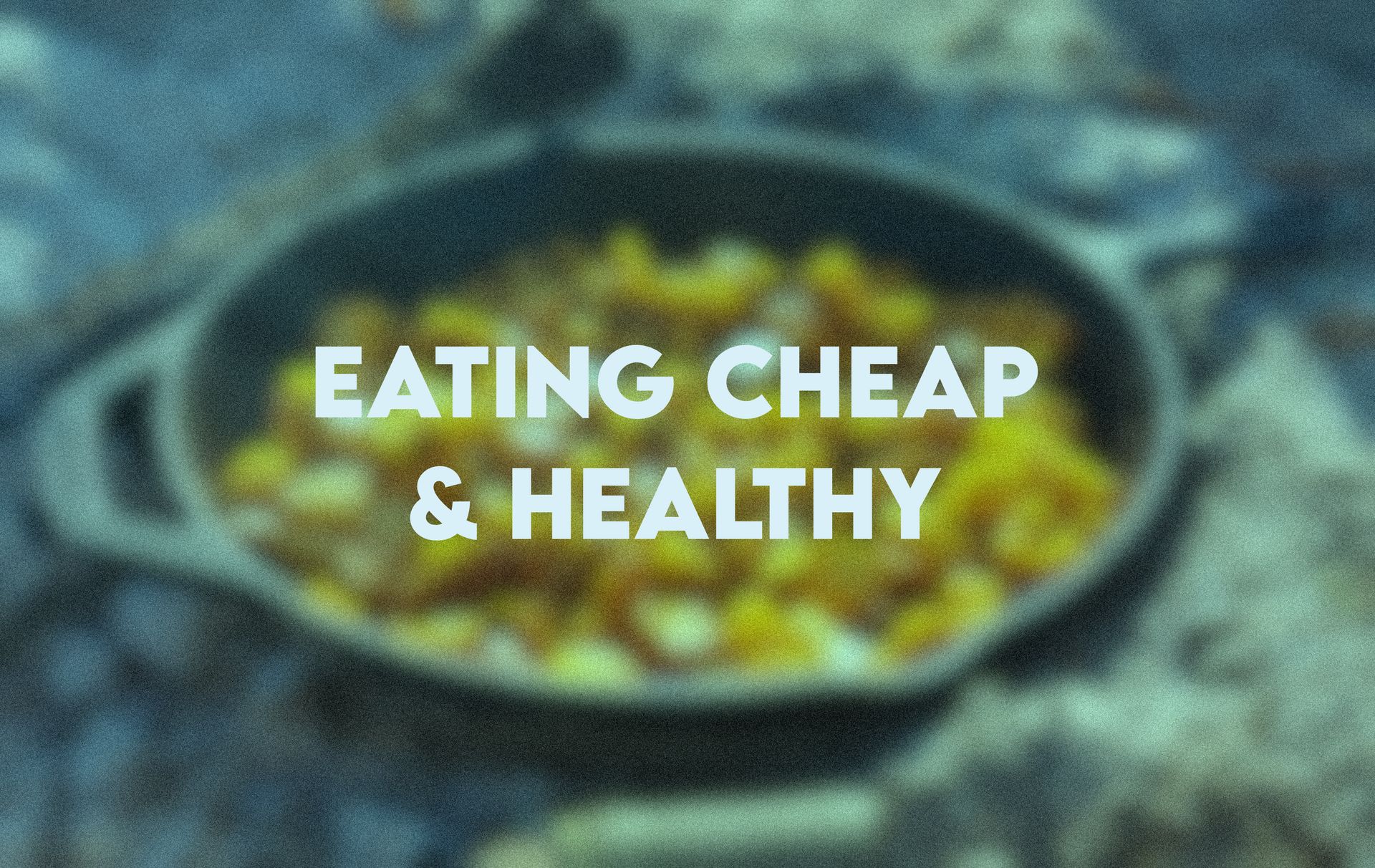
A while back (I think almost exactly 2 years ago now) I wrote an article on how to eat clean and cheaply.
Today I want to revisit that because not only was it a great article that a lot of you missed since I had a small audience, but I think it’s becoming more relevant than ever today to know how to eat well, and how to do it economically.
So today I’ve kind of rewritten the whole thing and taken some parts from the original article!
I want to teach you some basic principles you can follow to make sure you’re generally eating good food without having to get extreme with your diets, calorie counting, and measuring carbs.
The truth is, it’s a lot simpler than people pretend it is!
What are “real” foods?
What I mean when I say “real” food or “clean” food is:
The food must be minimally processed, and in a way that serves a purpose like safety, preservation, or digestibility (freezing vegetables, milling whole grains, cooking meat, or fermenting pickles for example) as opposed to highly processed which strips food of nutrients and either adds synthetic ones back in or is nutritionally void.
The food must be nutritionally dense. No foods that are “fortified” or animal products that have only been fed junk corn or anything, it has to actually provide vitamins, minerals, protein or other nutrients by default.
The food must be grown or raised naturally. This means no pesticides, herbicides, fungicides, artificial hormones, routine antibiotics or synthetic fertilizers. And no, “Certified Organic” does NOT guarantee any of these contrary to popular belief!
The food needs a short ingredient list. If the label has a list of 15+ ingredients and most are unrecognizable, then it isn’t real food anymore. This is what we call a “HPF” (Highly processed “food”) or as I like to call it: HPS (“Highly processed slop”).
The food should only be shelf stable if processed in a minimal way that naturally keeps it shelf stable (no artificial preservatives). Some examples would be fermented goods, dried fruit, nuts, dried grains etc.
I want to be clear, this is an ideal. I absolutely understand that not everyone is able to or wants to quit the modern food system cold turkey (even I don’t eat 100% natural) it’s a process of slow improvement not a hard rule.
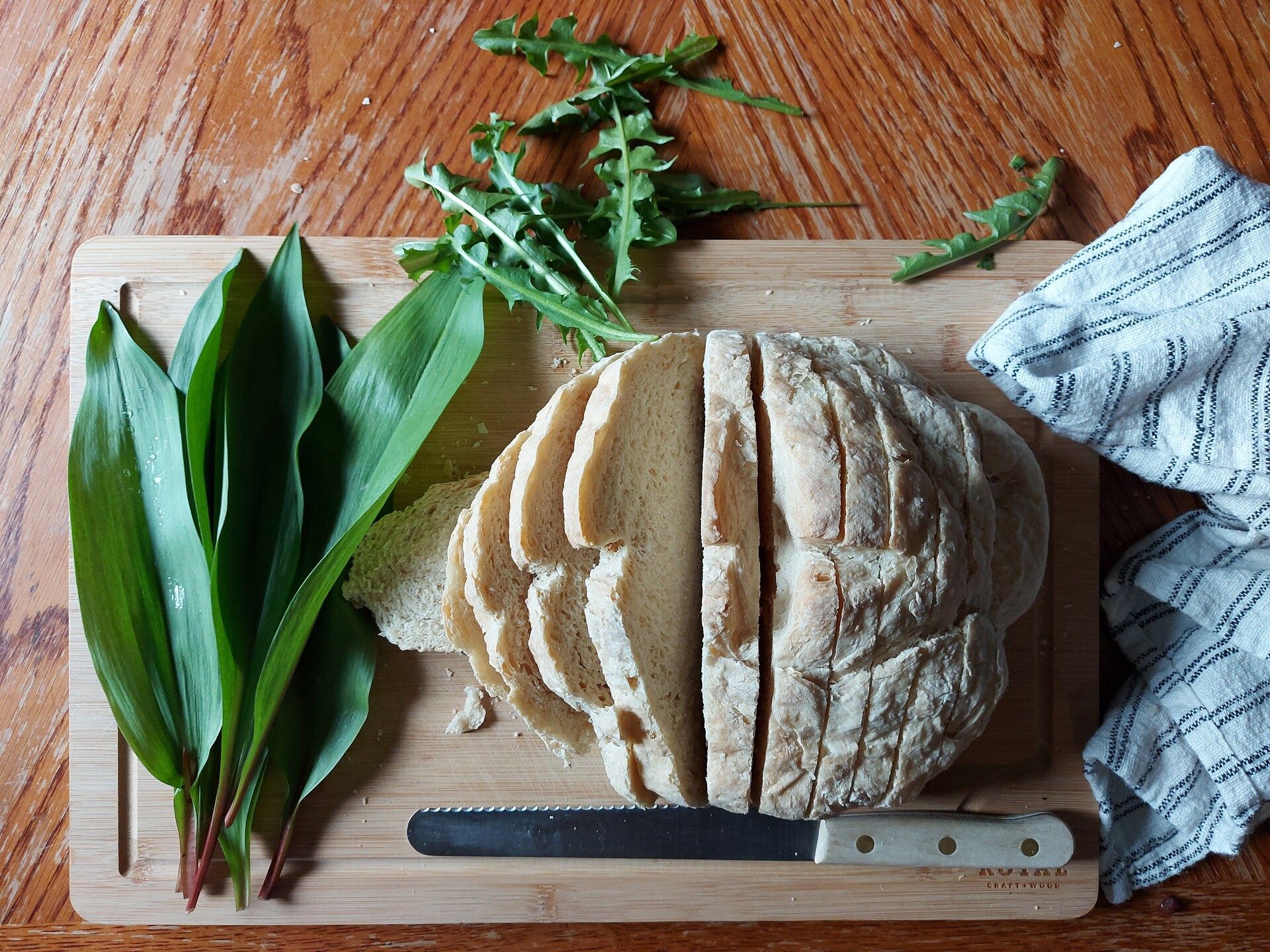
Ramps, dandelion greens and homemade bread
Modern Food Problems
I’ve written recently about the state of the food system so you can read that article here.
On top of the systemic challenges we’re facing when it comes to the logistics of our food, there are also major problems in the sourcing of our food.
Firstly, about 15% of our foods are imported. That’s a pretty low amount right? Well that other 85% is made up mostly of HPFs, and the remaining 15% tend to be “fresh” produce like fruit, meat, vegetables, oils, and other raw ingredients.
So in other words, we outsource a ton of the only foods that should be healthy and clean! Over 50% of our fruit, over 30% of our vegetables, the majority of seafoods and meats, and many other would-be nutritionally dense foods are all imported.
Yes, some countries have decent enough standards, but many of the countries have terrible quality standards for what they import to the US. Additionally, this causes massive supply chain fragility, this is very serious.
The FDA and USDA as regulating bodies can have a place, but they have effectively sold out on the American public and are feeding us poisonous lifeless gutter muck and calling it food while they suppress the domestic production of real food.
I say that last bit partially because those two agencies have made a habit of allowing imported foods to be labeled as “product of USA” or “Distributed in the USA” and similar wording, neither of which are actually produced IN the United States!
In my view this is absolutely outlandish. Intentionally or not (and I’m not claiming that this is intentional) they have defrauded the American public into rejecting healthy real foods, and into consuming highly addictive, flavored garbage that produces chronic disease epidemics and is as nutritious as Styrofoam.
Now don’t get me wrong, this is very bad, however, I don’t want to make things seem completely hopeless.
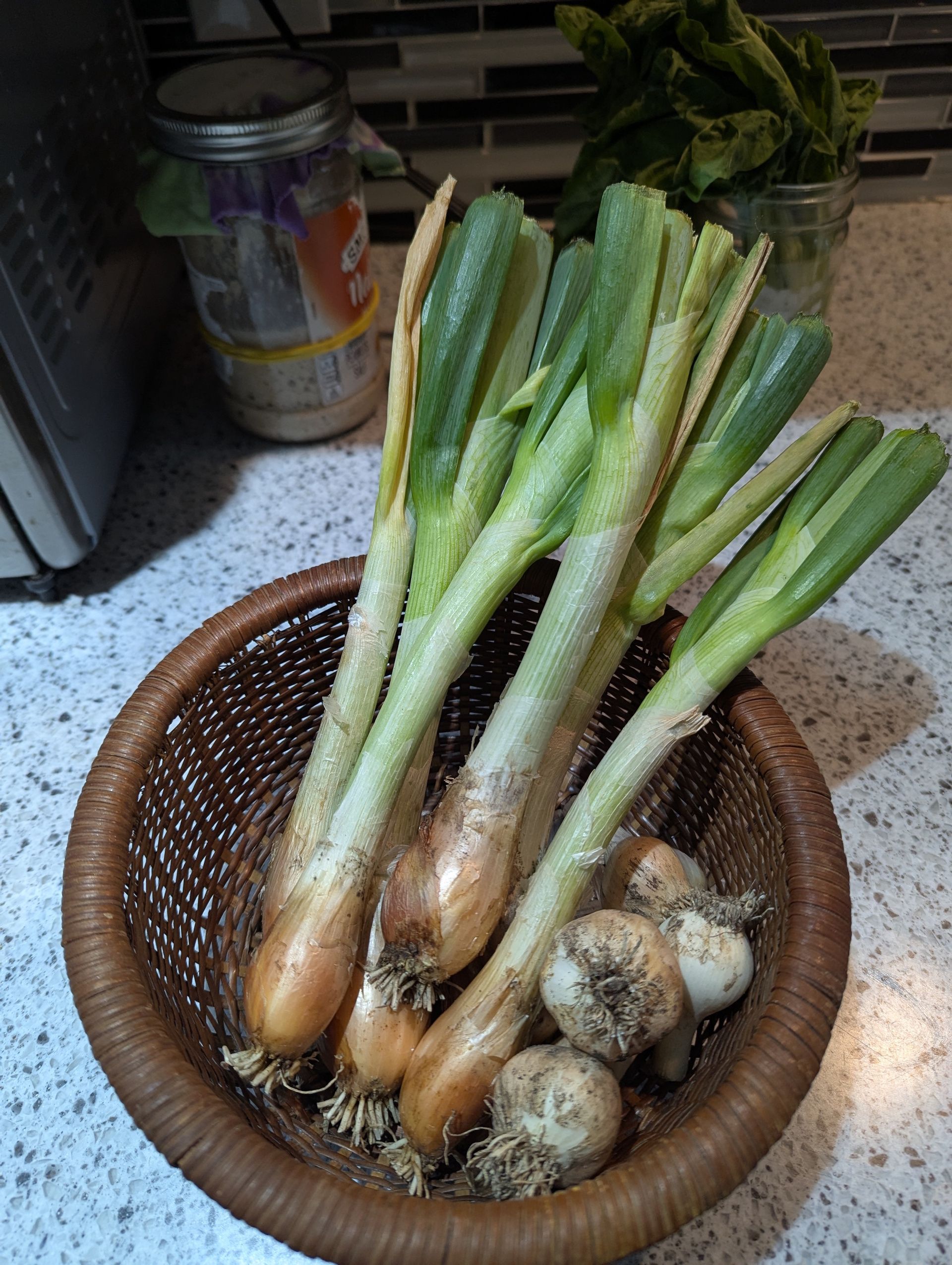
Walking onions we grew
My Recommended Diet
So what do I recommend eating?
Firstly, everyone has different health needs and different side effects of the modern food system to recover from so this is a general guideline.
I don’t pretend to be a dietician or health expert, but I do believe humans were made to be omnivores. A diversified diet is essential for good health, and that means eating plants and animal products.
I like to think “was it living at one point?” and “can I eat something living?” (like rich in bacteria, not a live animal) when it comes to my meals. It’s hard to go wrong with minimally processed foods and adding something in that has living organisms.
Focus on mineral and vitamin content, protein, and healthy fats.
The closest thing I’ve found to what I would consider a clean diet is the Mediterranean diet (Plants, healthy fats, legumes, nuts and seeds, clean meats etc) but I would just adapt it to fit your local climate.
I’m a big fan of citrus and avocados, but there is research to suggest that your microbiome of bacteria (the gut in particular) actually changes seasonally and with the local climate you’re in. To me this suggests that maybe humans were meant to eat mostly seasonally and locally in an ideal world.
Here’s some new research on your gut biome changing with season and environment:
So to sum up:
Mediterranean Diet+
Eat living foods (fresh plants, bacteria rich foods like kimchi or other fermented foods)
Eat minimally processed foods
Eat nutrient dense foods
Eat locally and seasonally
Avocado oil and citrus fruits are great, but they might not really be what your body needs if you don’t live in a tropical climate! Peaches are amazing, but you’ll only get the full range of benefits when they are in peak season.
This obviously doesn’t mean there’s no flexibility, but it’s an ideal principle to work towards, not a ridged rule to abide by. I will definitely eat preserved peaches if my grandmother cans them for me.
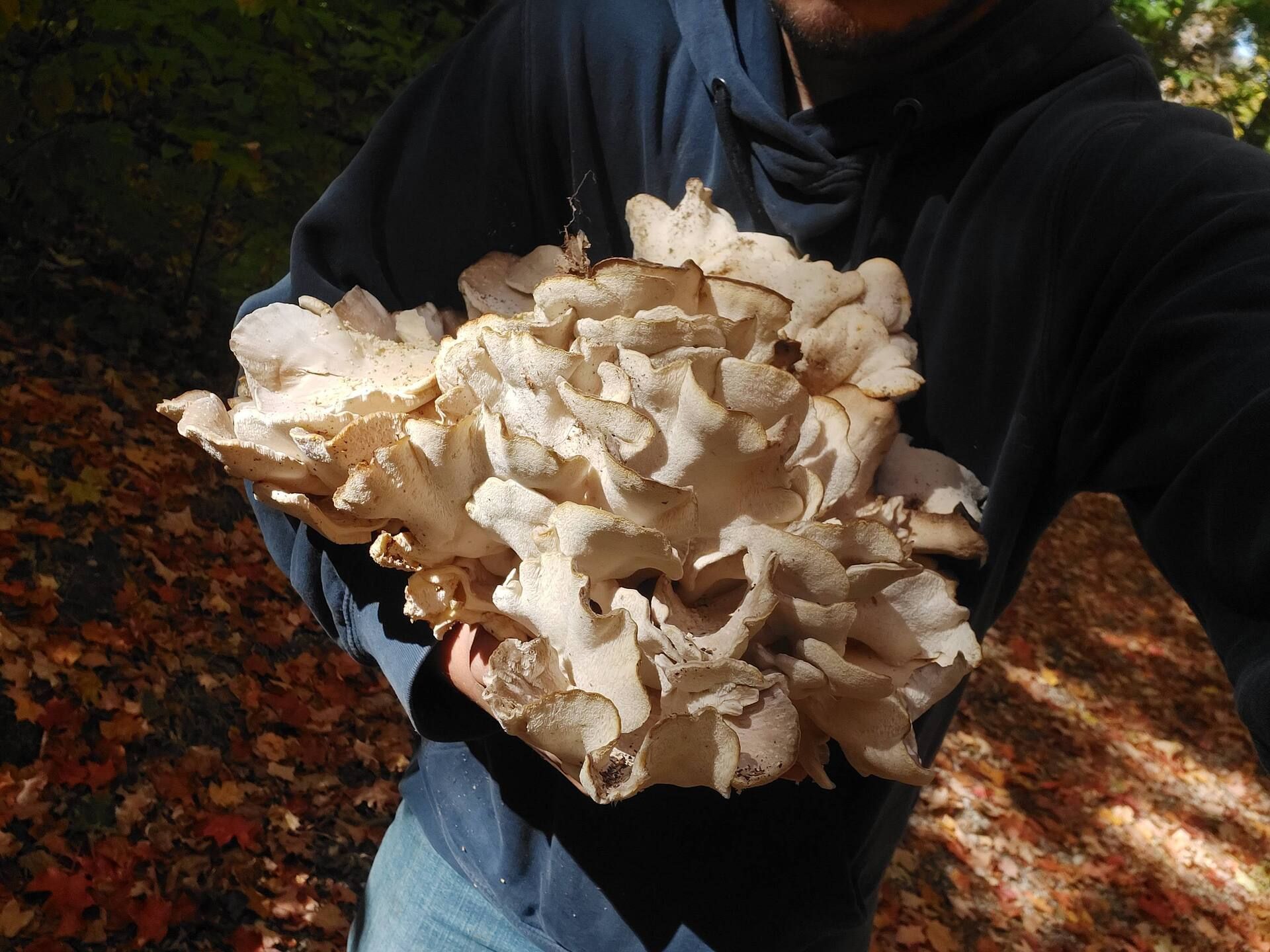
Me with my maitake harvest
Practical Steps
Cook at Home. Cooking is what I would consider an essential skill which is why I listed it in this article from 2024. Cooking in almost every scenario saves you a ton of money compared to eating out or buying premade HPS.
*Note: Yes, I’m aware that it often takes more time to cook than to go out to eat but guess what? It still nearly always saves you money.On occasion the time factor might technically lose you a little bit per meal, but calculating the per minute cost of cooking is for businesses. You might normally be spending that time sitting in a drive through and driving to a restaurant anyway so the benefits outweigh the negligible costs.
Use Master Recipes. You don’t need to be a high level chef to cook at home! Sometimes using the same general formula for a meal and swapping out ingredients can give you tons of variety while making it easy to put together a meal is the way to go! If you’re a regular subscriber, you’ve already gotten a special email from me on 5 master recipes that should get you a long way.
Foraging/Gardening. Foraging is a great way to get completely free food, gardening is a great way to get almost free food.
While I understand that not everyone is able to grow or forage their own food, most people can! A good alternative is to purchase foods from a forager or gardener.
Learn to Preserve Food. Learning to preserve food in even the most basic ways will save you a lot of money. It’s also a great activity for children and can be a lot of fun. When you eat apples, do you know how to use the peels and cores for vinegar? Do you know how to juice them and use the pulp for fruit leather? Do you know how to dry herbs?
Buy in Bulk. If you have any disposable income at all (or can afford to use a tax return or something) I cannot recommend buying in bulk enough.
Say you want some beef. In my area, it goes for around $8 per pound at a minimum for store-bought low-tier beef. Some cuts are obviously far more expensive!
We have a friend that we occasionally buy a half or quarter cow from and all cuts even out to around $4-5 per pound instead. This means that a $24 conventional chuck roast becomes $12 for pasture raised premium meat.

Beets and kale being prepared
Master Recipe
The Bowl
This is a base we use all the time in my home.
It’s incredibly easy to add or swap out different ingredients as needed or for different flavor combinations!
The three ingredient types we use are:
A starch/filler
A protein
A vegetable/herb
A sauce/seasoning
Example combos include:
Rice with venison and wild ramps drizzled with hazelnut oil
Potatoes, bacon, chickweed, and meadow garlic with black pepper
Sweet potato with mallow, beef, and topped with balsamic vinegar
This is a great recipe for using up leafy greens which I mention pretty often!
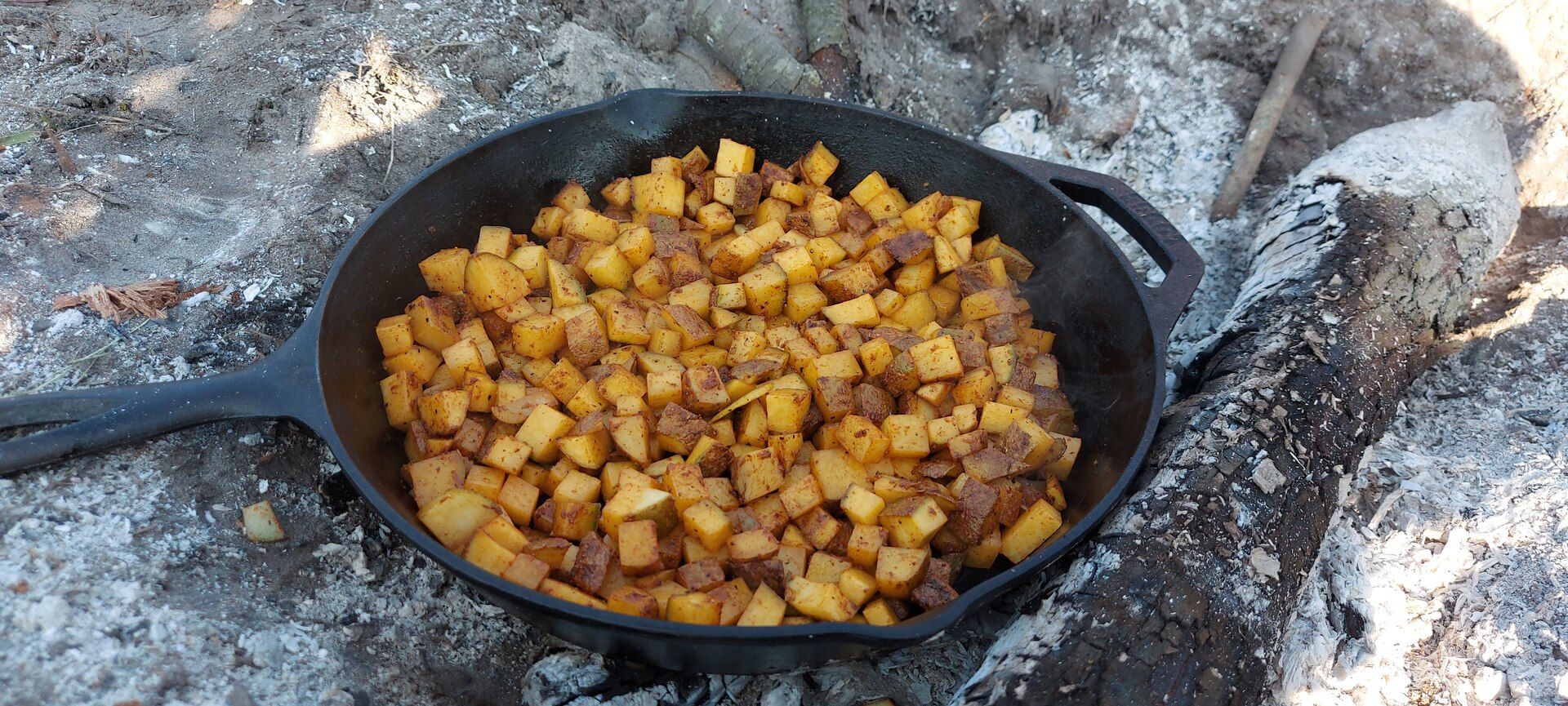
We enjoy campfire cooking occasionally
Example
1 Cup of Rice - $0.50 (We used 1 cup out of 3 cup bag)
2oz Apple Cider vinegar - $0.02 (We make this at home for free, the sugar we buy in bulk and equates to less than $0.02)
Kale - $0 (I grow this myself and do nothing to take care of it. I spent a couple dollars on seeds 4 years ago and have eaten so many meals with it that the cost would be less than 1 cent)
3 Eggs - $0.58 (We sometimes get eggs for free from friends or family, however I’ll list the average cost of decent quality eggs at the store)
4tsp Sea Salt - $0.64 (That’s a generous estimate.)
TOTAL: $1.74 (which feeds myself, my wife, and my toddler. This is $0.58 per person)
If you ate 3 meals per day that cost even $0.75 per person, that’s a total of $67.50 in groceries for the entire month (per person) if you really stretched yourself.
This is roughly $270/month for a family of 4 or for one large blue collar worker.
Obviously, even I don’t go that extreme but the point is it’s possible!
There are several recipes you could make in a similar way and even if you spent twice that, you’re still only at a fraction of the average grocery bill.
Follow me on social media for behind-the-scenes videos and seasonal photos!
Leave a comment to show the algorithm how legit we are!
Thanks for reading The Naturalist. Please share on social media to support the work!
Reply